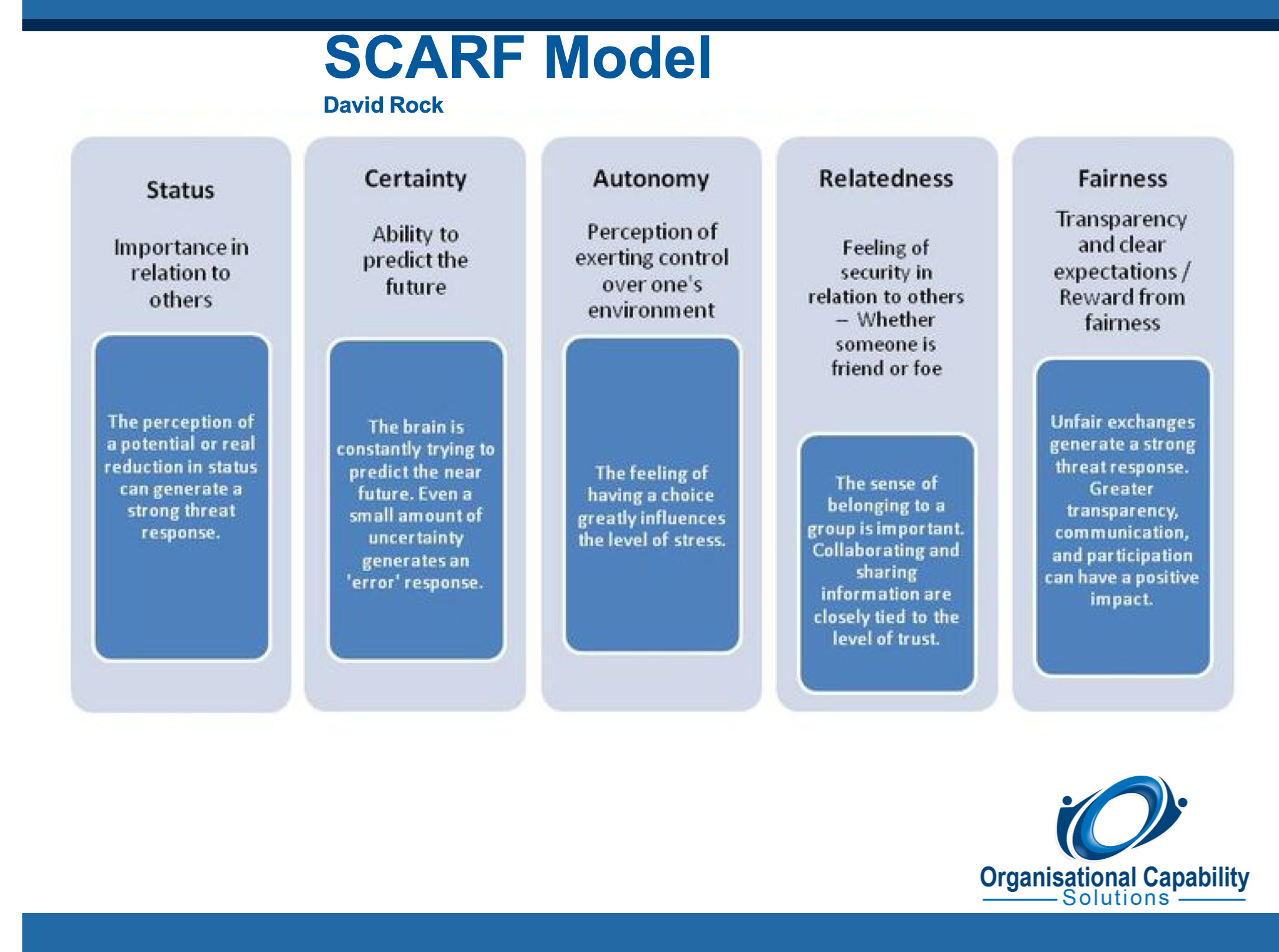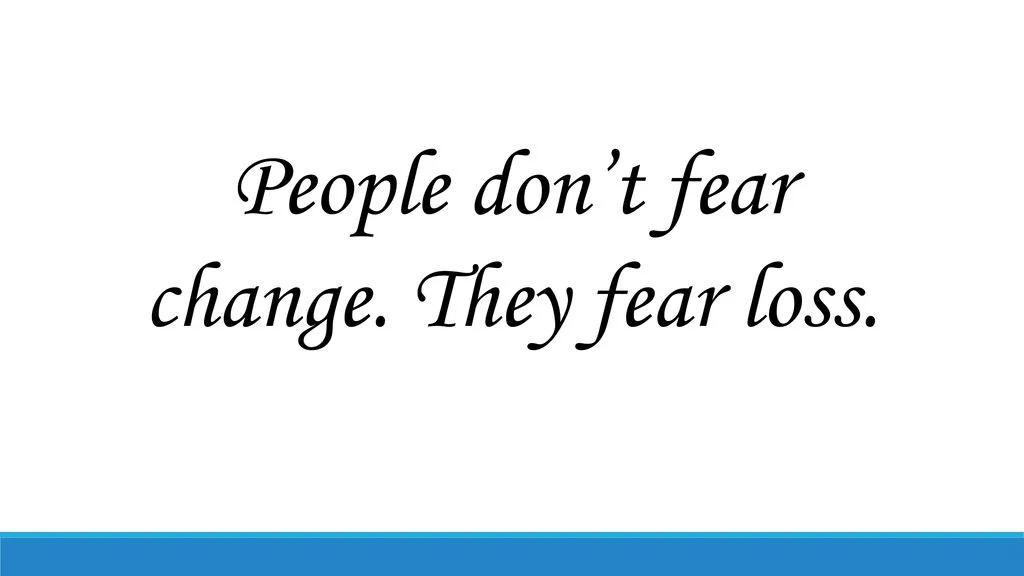Let us utilise this model to evaluate our level of support/resistance for our organisational response to Covid 19.
Starting with ‘Time to Adapt.
This has clearly been short. Earlier this year people had heard about it on the news but in my experience, there was a low level of recognition that it would impact on our shores. The same way SARS had minimal impact in Australia. So when we started to actually take clear actions of responding the time felt short. I’d suggest that initially this put us in the left-hand column. As time has elapsed, our people (and ourselves) are now progressing to the right. You decide where you and your people are on this.
Leaders actions
To increase ’Time to Adapt’ from here you can:
Continually forecast to your people what any likely and possible further responses from your organisation are.
Keep these forecasts real and include the level of likelihood in the forecast.
Build confidence in you and the organisation by including the processes you will utilise to make and execute that decision.
Give leaders in your organisation enough information so they can discuss and translate the information and its implications at the team and individual levels.
Level of Control
What say did people have in the measures that have been implemented. When a fast response is needed, there may reasonably not be the opportunity for people to have input or influence on the measures taken, but as a leader it is beneficial to be aware that such a situation will negatively impact on the support/resistance to those measures. Those in the health and care sectors will have perceived this as a reasonable level of control, because they were already aware of the type of protocols that are needed in a pandemic. Those in other sectors probably perceived a lower level of control. Where did your people land when you assessed the level of control they had on the changes (made to date and being developed) associated with the pandemic?
Leaders Action
To increase ‘Level of Control from here you can:
Provide opportunities for people to have input into the measure that need to be implemented.
If the measures are decided, endeavor to provide opportunities for input into how the measures are to be implemented.
When communicating the measures, include clear articulation of how input was obtained and
If the above are not practicable, invest in thorough and timely explanations as to why the steps are being taken, including opportunities for people to question the reasons for the actions taken.
Equip leaders to address questions and concerns about the measures being taken.
Be prepared to admit that some of the actions taken, in hindsight, may not have been optimal. It can then be added that action was needed and the decision makers made the best decision they could in the time they had with the information available at that time.
SCARF Factors
These factors were discussed in issue 1 of this series. And I note that if I was writing that issue now, I would rephrase some of the language. That is because it is likely that the restrictions that we will be required to adhere to, to address the pandemic are likely to go on longer than I anticipated at the time of writing issue 1. A symptom of the current uncertainties.
How are the requirements of the pandemic impacting the Status of you people? If your people are experiencing loss of income (partial or total) that will move them down the matrix. In certain sectors, status will increase. Look at the public outpouring of support for health workers.
Leaders Action
To increase status from here you can:
Promote any positive role your organisation is having in your community through these times, and therefore the importance of each role in the organisation.
Remind your people that keeping a business afloat and people employed, is a contribution to the community.
Remind people that following authorities’ advice on physical distancing is important and is helping the community, so anything you and your people are doing to enhance physical distancing, matters.
What is the impact on the Certainty for your people? Two weeks ago, before the various economic stimulus packages, certainty for many would have been lower than it is because of those packages. Even so, how are your people responding to the highly changeable nature of the pandemic response by governments, organisations and others in their lives. What is their level of certainty for issues away from work such as the wellbeing of their loved-ones?
Leaders Action
To increase Certainty from here you can:
Reinforce, enable and insist on the full application of the hygiene measures to prevent acquiring and spreading covid-19.
Provide your people with quality and ongoing information about the status of your organisation and what is being done to keep it sustainable.
If the organisation is not sustainable, investigate and inform your people of the provisions available to them to support themselves and their families.
Remind people that while this is going to persist for a while, there will be an end point to it.
Keep talking about what certainties there are such as:
o There are customers that need your product or service
o Even if the need for your product or service has diminished for now, that need will return.
o We are fortunate to live in a very robust society which has solid safety nets for us.
o We are fortunate to live in a society that is taking relatively strong steps to minimise the negative health impacts of this illness.
Let’s look at Autonomy. What is the impact of control over one’s environment? My observation is that many people now working from home, are feeling a slightly increased level of control over their work, but clearly less control in their lives overall because we have lost the choices to go out. For those who have concern about the virus infecting them or their family directly, the instruction to stay at home is likely to be a comfort and increase the sense of autonomy.
Leaders Action
To increase Autonomy from here you can:
Look for ways to involve people in determining any changes that need to be made.
While setting whatever clear boundaries and standards that are required, and within the capability of each of your people, actively look for opportunities for people to make their own decisions within those boundaries.
Looking at Relatedness, is there a change in their relationship status (not the Facebook kind) with others? This may be influenced by the extent to which the physical isolation is causing social isolation versus an experience of social connectedness.
Leaders Action
To increase Relatedness from here you can:
Keep in touch yourself with each of your people.
Expect and enable leaders at all levels to do the same.
Facilitate the engagement between people using the various digital technologies available. Consider enhancing the technologies available to your people to improve the engagement experience.
Get your people together virtually just for the sake of getting them together with the agenda items just about; sharing their experiences, unloading, supporting each other, looking for the positives and funny experiences in what has been going on for them and, having some fun.
Remember significant events for individuals and the team. If you marked an occasion (such as birthdays, other anniversaries, achievements) when your co-located, keep marking the occasion while you at located at a distance.
Lastly, Fairness. What is the perception of fairness that your people are experiencing? Are your people feeling “we are all in this together” that our political leaders are repeating? Or do they feel they are carrying a heavier burden than others. For those who have ‘faired’ well out of any responses by the organisation to the pandemic, do they feel that others have been treated unfairly. The perception of how others are treated can have a similar impact on support/resistance as the perception of the treatment they personally receive.
Leaders Action
To increase Fairness from here you can:
Ensure any decision-making processes are in fact, ‘fair’.
Be transparent about any processes. If you’re not comfortable being transparent, people will reasonably consider there is something not fair happening.
Lead for the top in terms of any sacrifices that need to be made. I heard an example last wrecently where an organisation had to cut salaries. The cuts went as follows:
o General staff 25%
o Executive 40%
o CEO 50%
Ensure people know that this happening.
A Common Thread
If you are reading this blog you have already demonstrated a passion for leadership. And leadership is the common thread through all of the above actions. These actions take commitment, energy and skill. I urge all organisational leaders once again, to not skimp on the resourcing of the leadership functions, both in terms of the priority they make of their own time and, the number and capability of the people in the leadership functions of your organisation.
As a senior leader, your junior leaders need you to mentor, coach and re-energise them so they in turn, can fulfill the needs of their people. Your more junior leaders may be resilient, but they are also human and ongoing demands without a boost will drain them. They need such support from you.
Then there are your needs. You need a boost too. To get your boost some options are:
Have your leader fill that role.
Ask an external mentor (such as a former boss or someone else you respect) to help in this role.
Work with one or more peers within or without of your organisation and fill this role for each other.
Work with a professional coach.
A combination of the above.
You already know that your behaviour will set the standard for the rest of the leaders in your organisation, so again, I urge you to make this activity a priority. It will be good for you and if you are feeling more effective, your organisation will benefit too.
Please feel free to share any of your experiences with followers of this blog/post.
















